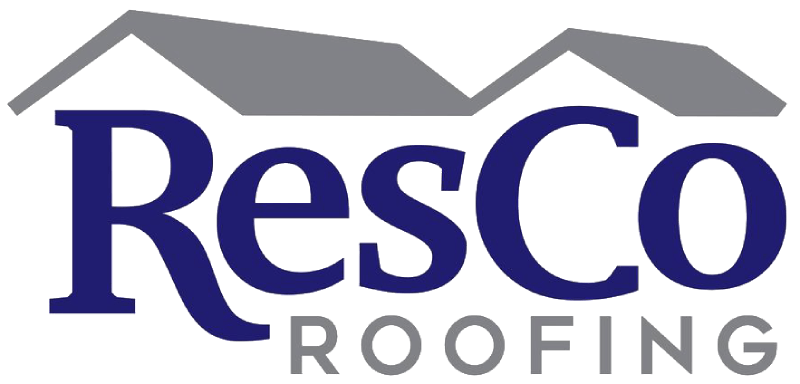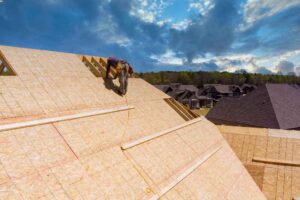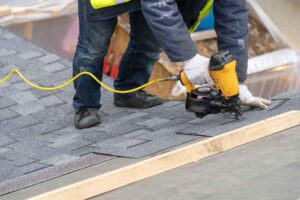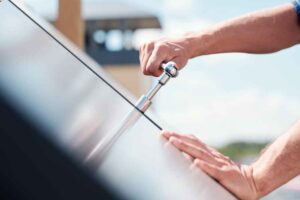Benefits of Installing a Gable Roof on Your Home – What You Need to Know
Are you considering adding or replacing the roof of your home? If so, a gable roof may be an excellent choice. A gable roof is one of the most popular styles used in residential housing because it offers both fixed and expandable design options and many benefits – from aesthetic enhancements to improved ventilation and air circulation. In this article, we will discuss why you should consider installing a gable roof on your home as well as what preparations you need to make ahead of time before beginning the project.

What is a Gable Roof and What Are its Benefits
A Gable roof, also known as a pitched or peaked roof, is one of the most common types of roof styles in architecture. It consists of two symmetrical sloping sides that meet at the ridge on top, forming a triangular shape. This style of roof is popular among homeowners and builders because of its simplicity and versatility.
One of the primary benefits of a Gable roof is its durability. The steep slope of the roof helps to prevent water accumulation on the surface, making it less susceptible to water damage and leaks. Additionally, its steeper slopes allow for better ventilation, preventing moisture buildup which could lead to mold growth. Gable roofs are also very sturdy and can withstand heavy rain, snow, and wind loads, making them a great option for areas prone to severe weather conditions.
Another advantage of a Gable roof is its versatility. The pitch of the roof can be adjusted to suit different climate conditions and aesthetic preferences. The roof can also be designed to accommodate different roofing materials, such as shingles, tiles, or metal panels. This allows for greater customization and makes it easier to match the roof with the style of the home.
Gable roofs are also known for their cost-effectiveness. Because they are relatively simple in design, they can be constructed quickly and with minimal material and labor costs. Additionally, because of their popularity, there are many resources available on how to build a Gable roof, making it an ideal DIY project for homeowners looking to save money on home renovations.
5 Different Types of Gable Roofs and Their Pros & Cons
A gable roof is a type of roof with two sloping sides that meet at a central ridge. This design is found in many different types of homes and buildings and is known for its simple and classic look. However, there are actually many different variations of the gable roof, each with their own unique pros and cons.
- Standard Gable Roof – This is the most common type of gable roof, characterized by two sides that slope down equally from a center ridge. The standard gable roof is easy to construct and provides great ventilation, as well as ample space for attic storage. However, it can be more susceptible to wind damage than other types of roofs.
- Cross Gable Roof – The cross gable roof is made up of two or more standard gable roofs that intersect at right angles. This style allows for more architectural interest, as well as greater stability in windy conditions. However, it can be more expensive to construct, and may require extra maintenance at the intersection points.
- Shed Gable Roof – The shed gable roof is a single sloping roof that is often used for smaller structures like sheds or garages. It is a simple and cost-effective design that works well for buildings with a limited footprint. However, it may not be as visually appealing as other types of gable roofs.
- Dutch Gable Roof – The Dutch gable roof is a hybrid style that combines the classic gable with a hip roof. This design provides extra space in the attic and can be a good choice for those who want a unique and eye-catching look. However, it can be more difficult and expensive to construct than other types of gable roofs.
- Butterfly Gable Roof – The butterfly gable roof is an innovative design that features two gable roofs that slope inward, creating a unique butterfly shape. This style is great for those who want a modern and creative look, as well as plenty of natural light. However, it can be more challenging to construct and may not be ideal in areas with heavy snow loads.
Overall, there are many different types of gable roofs to choose from, each with its own set of pros and cons. By considering factors like budget, climate, and personal taste, homeowners can find the perfect gable roof for their home or building.

Get Ready for Your Gable Roof Installation: Essential Tips and Tricks
Are you considering installing a gable roof? Make sure you’re fully prepared for this important home improvement project to ensure success. Here are some key steps you can take before your professional services arrive to make the installation process as smooth as possible.
The first step is to choose the right roofing material for your gable roof. With so many options available, it’s important to consider factors such as durability, cost, and aesthetic appeal. Popular choices include asphalt shingles, metal, tile, and wood shakes.
Once you’ve selected your roofing material, it’s crucial to ensure that your roof is structurally sound before installation can begin. This may involve repairs, reinforcement, or upgrades to meet modern building codes. Be sure to also inspect for any signs of rot or mold that could compromise your new roof’s integrity.
In addition to preparing your roof, you’ll need to clear the area around your home to provide space for installation equipment and materials. Remove any obstacles like trees or shrubs, and ensure there’s enough clearance for trucks and heavy machinery.
Communication with your professional services is key. Provide detailed instructions and specifications, discuss your budget and timeline, and address any concerns or questions you may have. This will ensure they have all the information they need to complete the installation process successfully. By following these steps, you’ll be well-prepared for your gable roof installation. This careful preparation will help ensure a smooth process and a long-lasting, beautiful roof for your home.
The Pros and Cons of Gable Roofs: What You Need to Know
A gable roof, also known as a pitched or peaked roof, is a popular roofing option for many homeowners and builders. This style of roof consists of two sloping sides that meet at the ridge or peak of the roof with an open space or gable between them. While there are pros and cons to installing a gable roof, the decision ultimately comes down to personal preference, budget, and the specific needs of your project.
Pros:
- Aesthetic appeal – one of the primary benefits of a gable roof is its classic and timeless appearance. Its pitched style can add a sophisticated and elegant look to any home or building.
- Increased ventilation – the gable design allows for improved airflow and better ventilation which can help reduce energy costs and make the indoor environment more comfortable.
- Flexibility in design – gable roofs come in a variety of designs and can be customized to fit the specific needs of your project. They can be modified to fit different architectural styles, and can also accommodate dormers, skylights, and other design features.
- More usable space – the high-pitched design of a gable roof allows for greater headroom and more usable space in the attic area.
Cons:
- Susceptibility to wind damage – gable roofs can be more vulnerable to wind damage than other types of roofs, especially if they are not properly braced or anchored.
- Potential for leaks – depending on the design and quality of installation, gable roofs may be more prone to leaks or water damage.
- Maintenance requirements – gable roofs require regular maintenance, including periodic cleaning of gutters and downspouts, as well as repairs or replacement of damaged shingles or flashing.
- Higher construction costs – the pitched design of a gable roof generally requires more materials and labor than other roof types, which can increase the initial construction costs.
It is essential to weigh these pros and cons carefully before making the final decision. Additionally, consulting with a professional roofing contractor can help you determine if a gable roof is the right choice for your project based on factors such as climate, building design, and budget constraints.
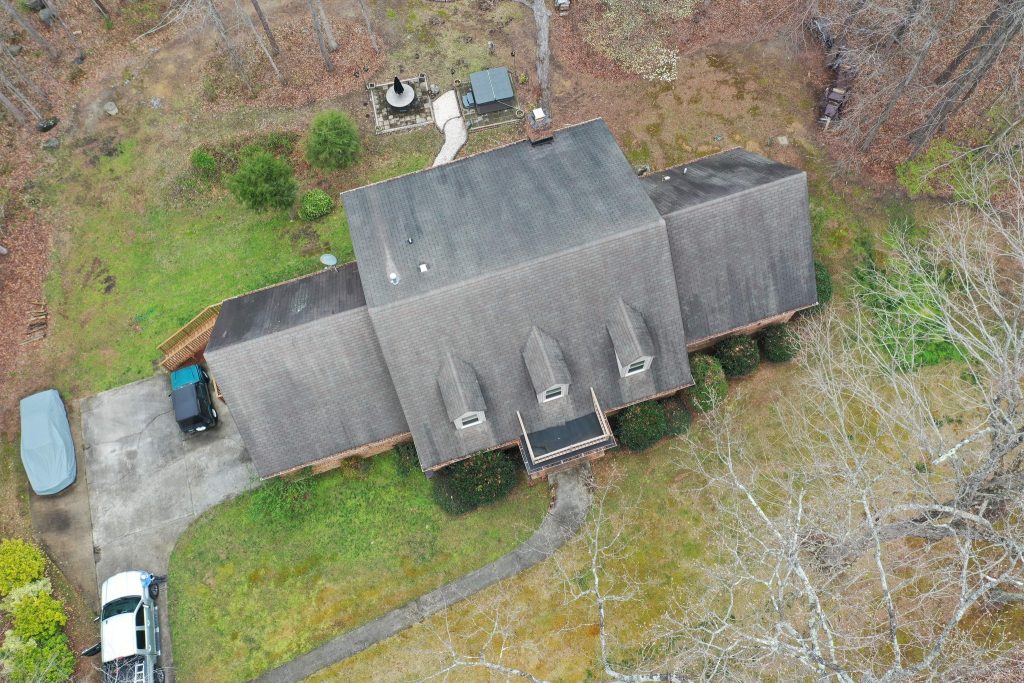
The Key Factors Affecting the Cost of a Gable Roof Installation
Considering a gable roof for your home? Understanding the cost implications is crucial before taking any action. Gable roofs are known for their simplicity and durability, but what factors affect their price?
Size matters when it comes to a gable roof installation. A larger roof will naturally cost more, while a smaller one can save you money. Other cost determinants include the choice of materials and the complexity of the design.
The material you select for your gable roof is a significant consideration. With options like asphalt shingles, metal, and cedar shake, each material has its own cost, durability, and aesthetic appeal. Knowing your priorities will help you make an informed decision.
The installation process itself also impacts the cost. If your home has a complex design or multiple levels, the installation may be more challenging and costly. To ensure a successful outcome, it’s vital to hire a reputable and experienced contractor.
The total cost of your gable roof installation will depend on various factors. Take the time to research and carefully select the materials and contractor that align with your needs and budget. By approaching this project with the right mindset and planning, you can enjoy a stunning gable roof for years to come.
Keep your New Gable Roof in Great Shape With These Practical Tips
- Clean your gutters regularly to prevent water damage and blockages.
- Trim overhanging branches to protect your roof from scratches, moss, and algae.
- After severe weather, inspect your roof for any signs of damage and arrange for prompt repairs.
- Professional roofers have the expertise to handle complex repairs, so leave it to the experts.
- Watch out for moss and algae buildup, and take action to prevent further damage.
- Proper insulation and ventilation are essential for maintaining your gable roof’s condition.
Maintaining your new gable roof takes effort, but it’s worth it to keep your home safe and attractive. Follow these tips to extend the life of your roof and avoid costly repairs.
Get the perfect gable roof that will stand the test of time. Choose the right one for your home with proper research and planning. Enjoy a durable and appealing roof that provides reliable protection. Learn about the structure, benefits, and cost before making an informed decision. And when you’re ready, contact an experienced professional contractor for installation or replacement. Ensure your property has reliable weather protection that lasts for years to come.
